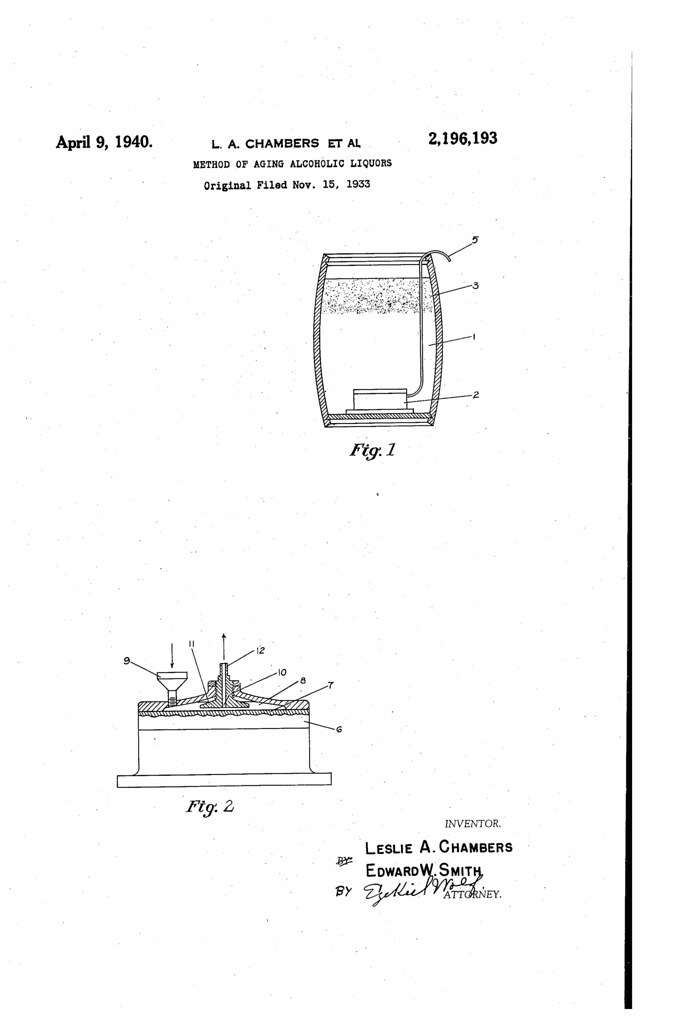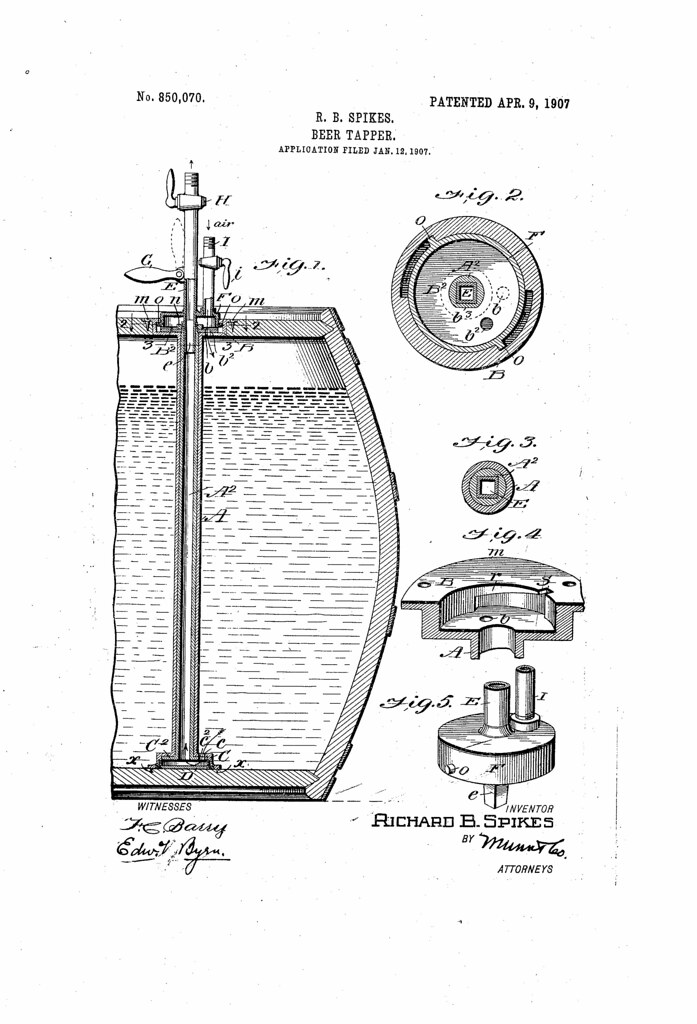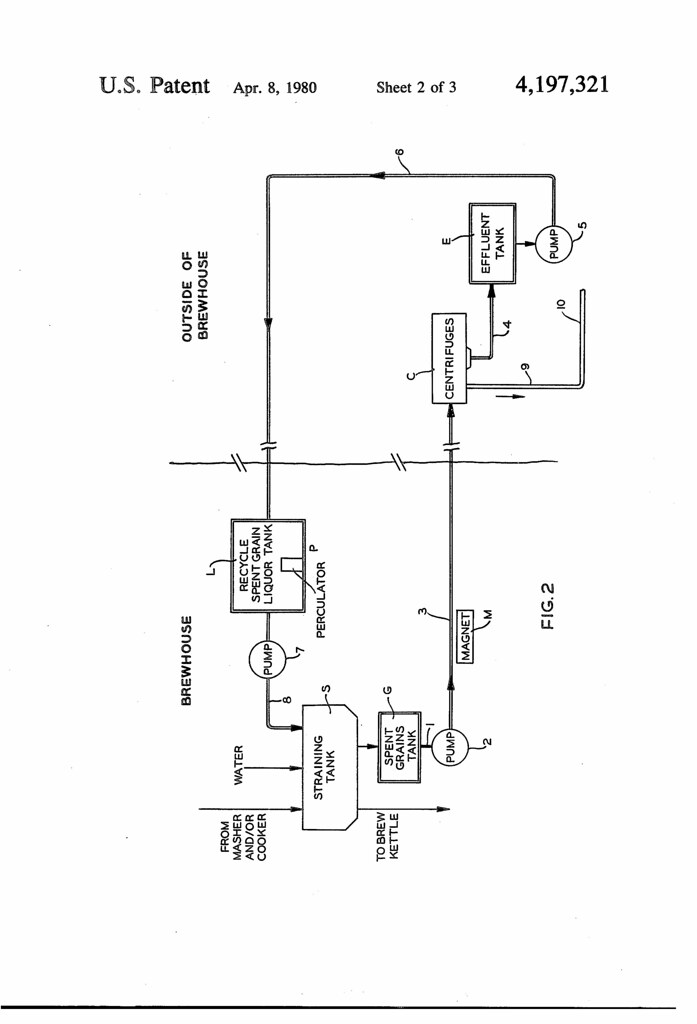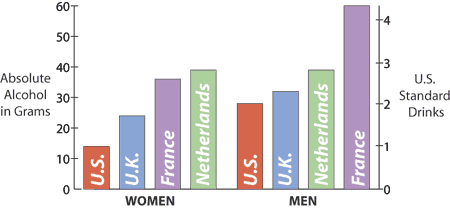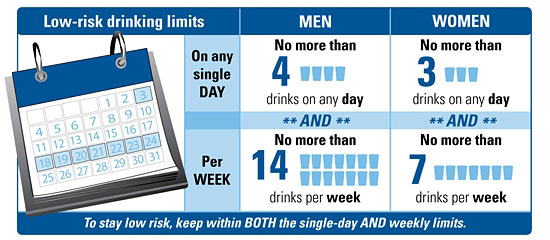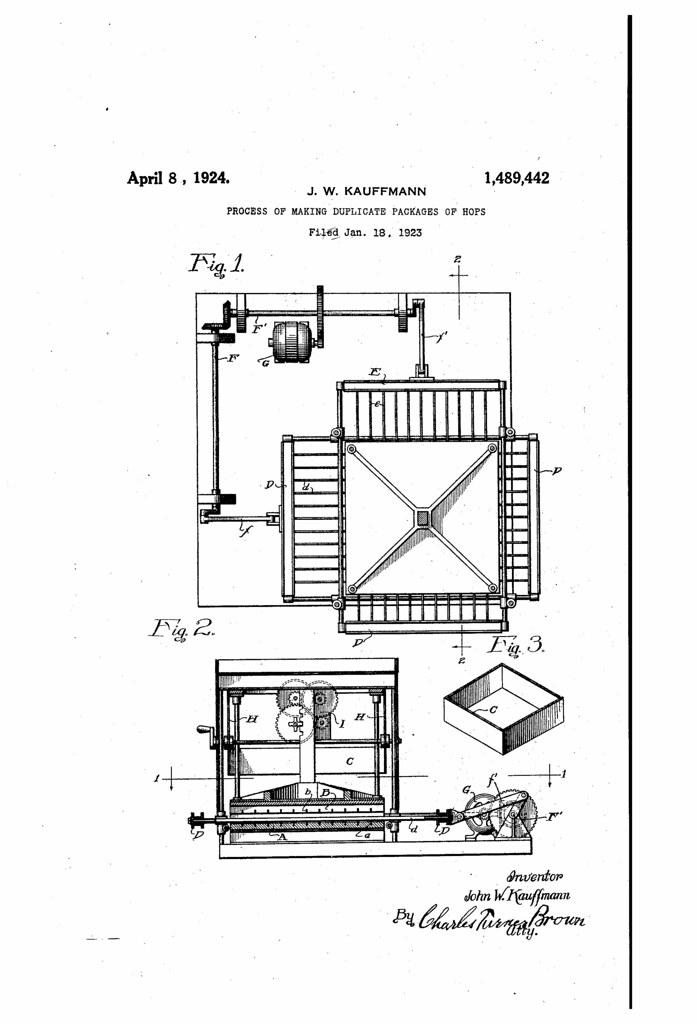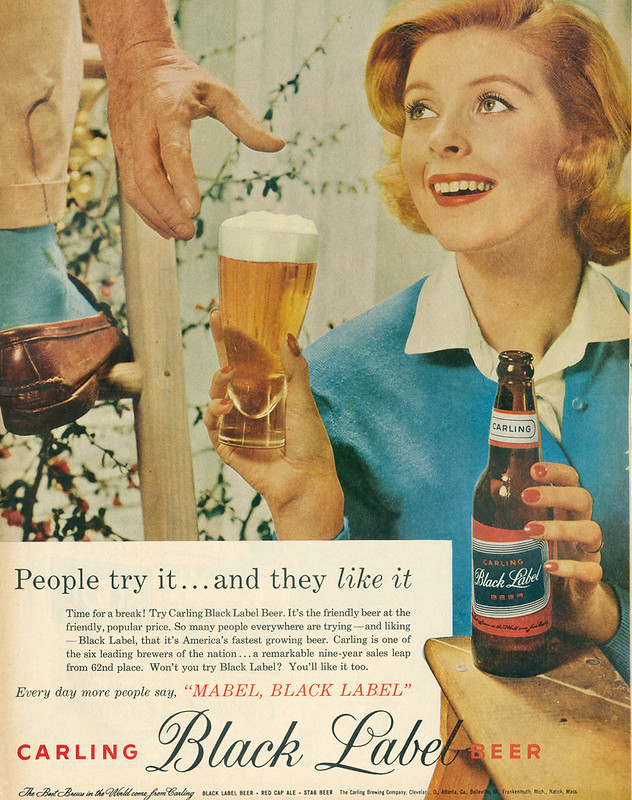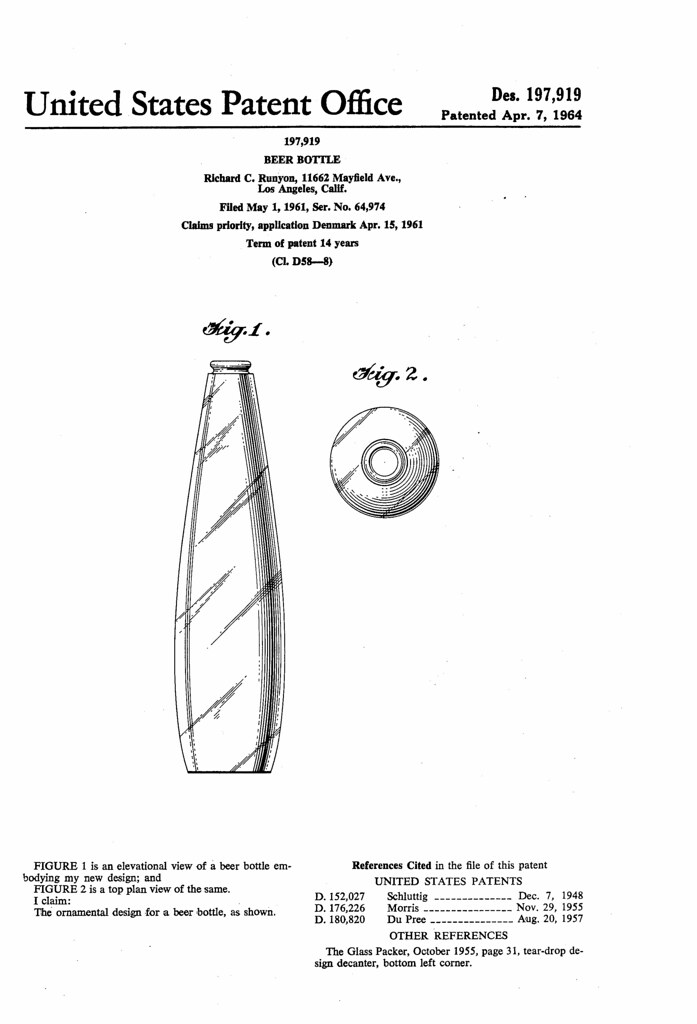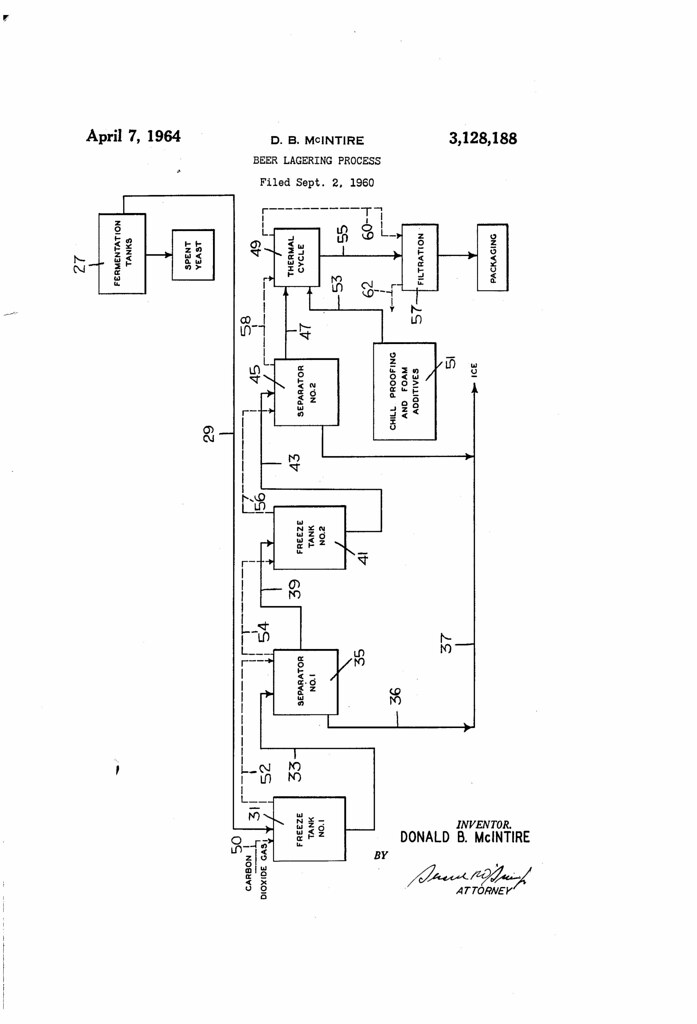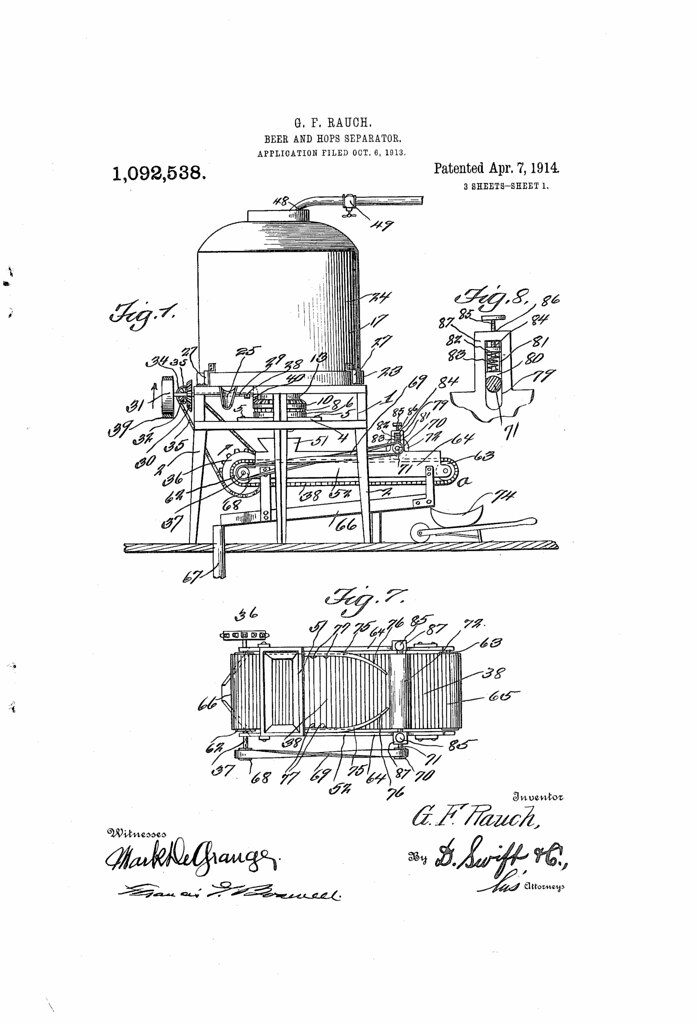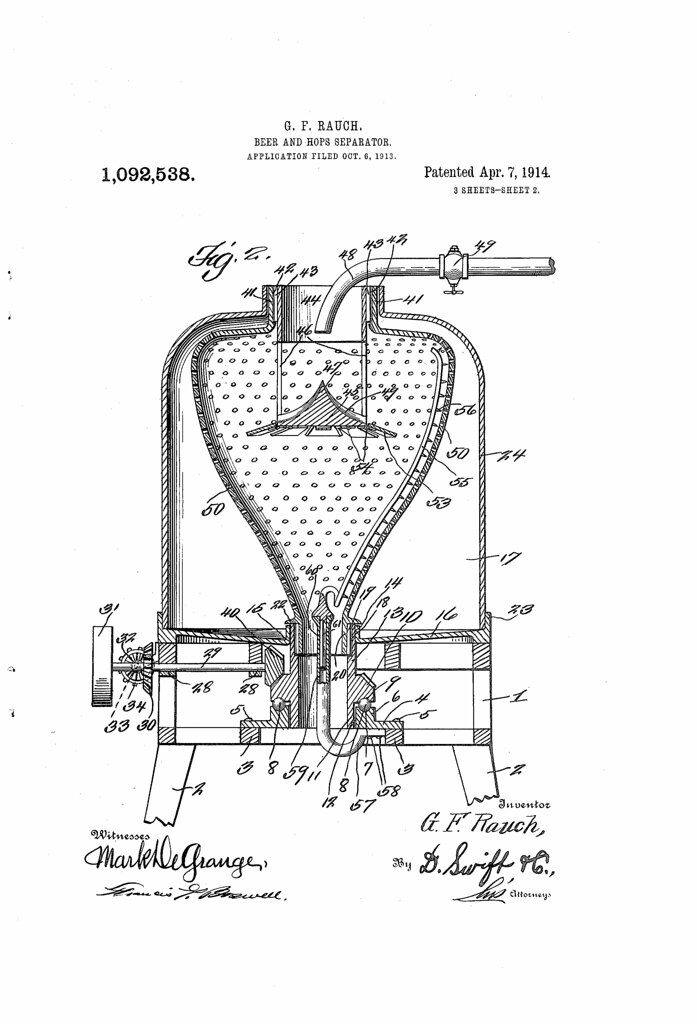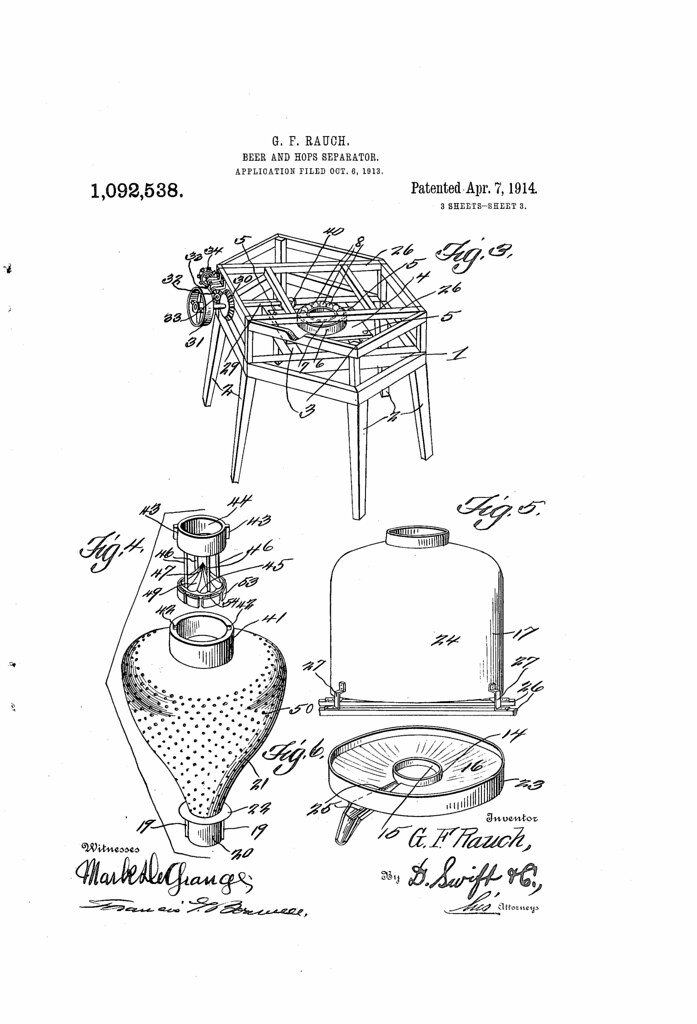
Today in 1940, US Patent 2196193 A was issued, an invention of Leslie A. Chambers and Edward W. Smith, for their “Method of Aging Alcoholic Liquors.” There’s no Abstract, but the description claims that the “present invention relates to the application of vibratory energy, particularly at supersonic frequencies, to the aging of alcoholic liquors used as beverages, stimulants, etc., for human consumption as, for instance, whiskies, brandies, rums, liqueurs, and to some extent to the so-called lighter or undistilled liquors as wines, cider and champagne and also beer and ale.” That seems like a strange idea to me, but who knows? The application mentions using an oscillator. It must have been too successful, or we’d be using oscillators to age all our beers. It’s certainly an interesting read to hear some of the ideas circa 1940 about aging alcohol.
